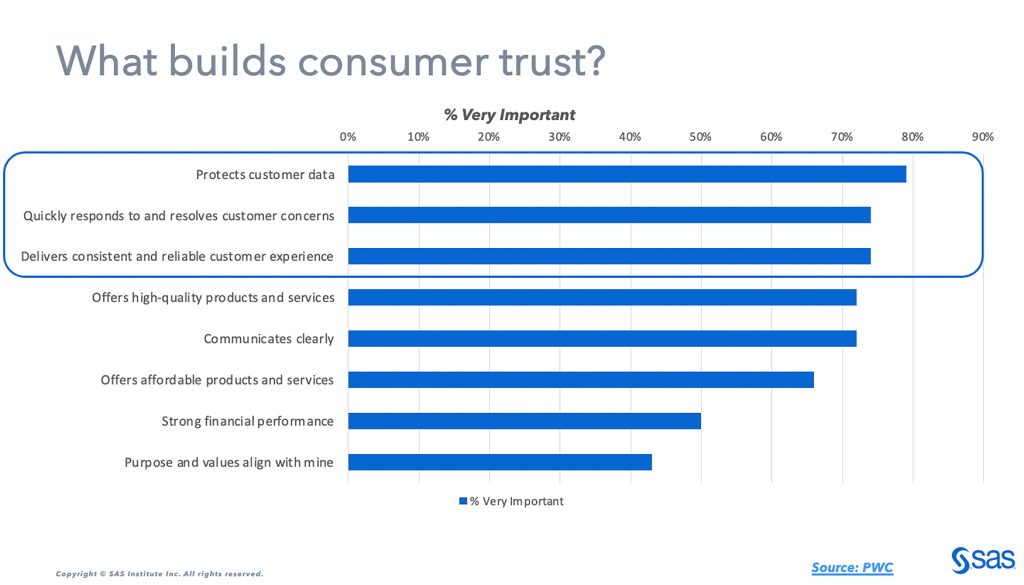Well, it’s finally happening. After years of banter, Google began testing a feature called Tracking Protection on Jan. 4. This feature is designed to limit cross-site tracking via third-party cookies.
It will be rolled out initially to 1% of all Chrome users, about 30 million people globally, with all users receiving the feature by the end of the year. So after several false starts, they are making good on their promise to phase out third-party cookies in 2024.
What does this mean for marketers? Well, a huge portion of the ads that you see on your favorite websites are driven by third-party cookies (cross-site tracking). So marketers and advertisers will have to rely on new methods to deliver ads to eyeballs.
This comes at a time when regulatory bodies, such as the UK’s Competition and Markets Authority, are questioning the Tracking Protection feature for data deprecation due to concerns that it’s an anti-competition move by Google.
These bodies believe that with the third-party cookie demise, those using Google Ad Manager and other Google products will become even more reliant on Google’s insights, targeting and measurement capabilities.
Consumers are wary
Digital trust is a huge issue – Forrester cites that only 59% of consumers trust the brands they interact with. And Sinch found that 87% of customers actively avoid buying from brands they don’t trust. So how do brands build trust? According to PWC’s recent Trust Survey, the top three survey results all tie to customer experience concerning data, timeliness and consistency.

Consumers expect value when they provide their data to brands. But trust is an issue of control, and consumers feel they have little or none. However, brands can give consumers more control by:
- Making zero and first-party data work harder.
- Doubling down on contextual personalization.
- Embedding AI-powered analytics across the customer journey.
- Accounting for the gradual merging of marketing and advertising disciplines.
Let’s look at the four ways brands can make consumers feel more in control – and deliver great customer experience.
1. Make first-party data work harder
Many marketers are shifting to their own zero- and first-party data or data that belongs directly to partner publishers or platforms instead of using third parties that don’t have clear chains of consumer consent.
When this data is collected in a proper, structured and judicious manner – with clear communication between brand and consumer in mind – it can be used to create better audiences to target. Better audience creation leads to more contextual creativity, messaging and profiles for marketing and advertising efforts.
The beginning of the end for third-party cookies is now underway. So it’s time for brands to start thinking about their data collection, profile building, audience creation and targeting techniques – and if they are up to snuff. SAS® Customer Intelligence 360 dynamically collects every consumer interaction down to the keystroke on all digital properties on a brand site.
This data can be joined with other data sources to reside in a customer profile stored in the SAS embedded customer data platform. From there, audience creation and targeting via customer journey creation and activation become a breeze.
2. Double down on contextual personalization
Data and AI-powered analytics help solve the personalization conundrum: Customers demand first-rate personalization, but don’t want to share their personal data.
Each brand interaction informs what a prospect or customer is trying to accomplish. The experience will be less creepy if marketers have a mechanism that allows them to act on real-time insights in the moment, ushering the customer to the next best action.
Let’s say a consumer buys a tweed jacket. Based on the cart history and previous purchases, the retailer can send her an offer for shirts that will go well with the jacket via app push notifications when she’s near the store. Mobile apps can also be used for in-store contextual marketing and further personalization — all on the consumer’s terms.
SAS embeds AI and machine learning in SAS Customer Intelligence 360 to determine when and where to place personalized content on web pages or in mobile applications for optimal engagement and dynamic personalization. This feeling of “this brand gets me and knows me” might encourage customers to willingly share data and give explicit consent to do things such as one-to-one targeting and cross-device recognition while minimizing the risk of creepy CX.
3. Embed AI-powered analytics across the customer journey
When marketers can apply predictive analytical models across the key customer journey phases, brands can uncover opportunities to cultivate value-generating behaviors and extend the customer’s lifetime value.
For example, SAS Customer Intelligence 360 uses machine learning and AI to guide customers along a journey based on their real-time behavior, parallel journeys, historical data and other data such as geolocation, sensors, wearables and more. This diverges from the traditional approach of guiding consumers along a predetermined path set by the marketing department. Using this technique, marketers can then design and orchestrate customer journey paths to predict and deliver the best combination of touchpoints such as:
- Human interactions (such as a call center).
- Digital interactions (website, mobile apps).
- Customer service (live chat, conversational AI).
- Onsite experiences (retail store, bank branch).
- Narrow two-way interactions (such as display advertising, interactive customer surveys).
4. Account for the gradual merging of marketing and advertising disciplines
Often the only difference between marketing and advertising is that one is on owned sites and the other isn’t. While that’s usually true, there are minor exceptions. But what’s certainly true is that as third-party cookies fade away, marketers and advertisers will share the same data more than ever before.
With cookies crumbling and advertisers and marketers sharing lots of the same data, what’s next? It’s “MadTech,” which brings together the personalized, individual reach of MarTech with the massive data pools of AdTech.
As customer data platforms, ad servers, customer engagement platforms and data clean rooms increasingly converge, it’s time for brands to consider what their future marketing and advertising ecosystems will look like. SAS Customer Intelligence 360 provides a flexible connector framework to bring all of these technologies together in a simple, point-and-click manner.
The upshot: The future of CX is bright
Third-party data may be facing an existential threat. Leading brands will act on richer and more accurate data sets, making their messages more contextually relevant for each customer.
Brands that confidently deliver analytically-powered personalized CX at scale will have an edge in the cookie-crumbling media world.
Learn more about how your organization can thrive in a digital world without cookies
+























